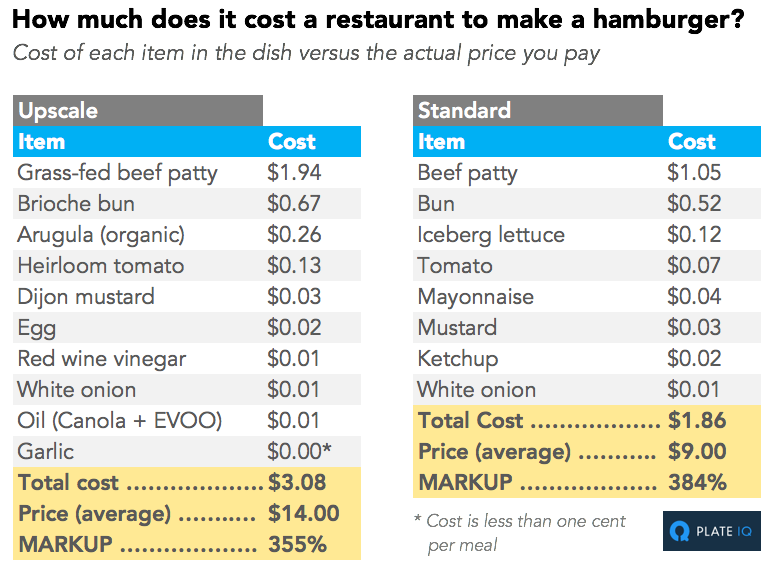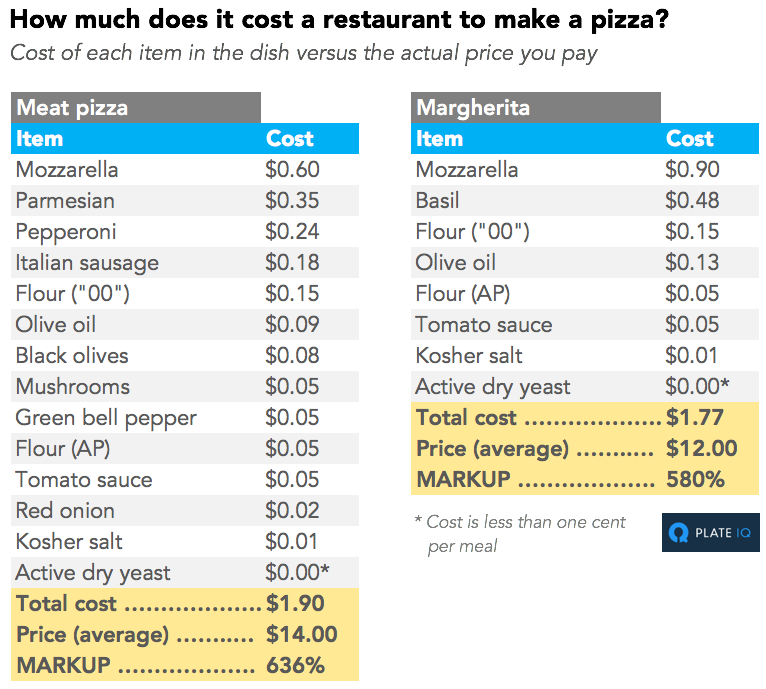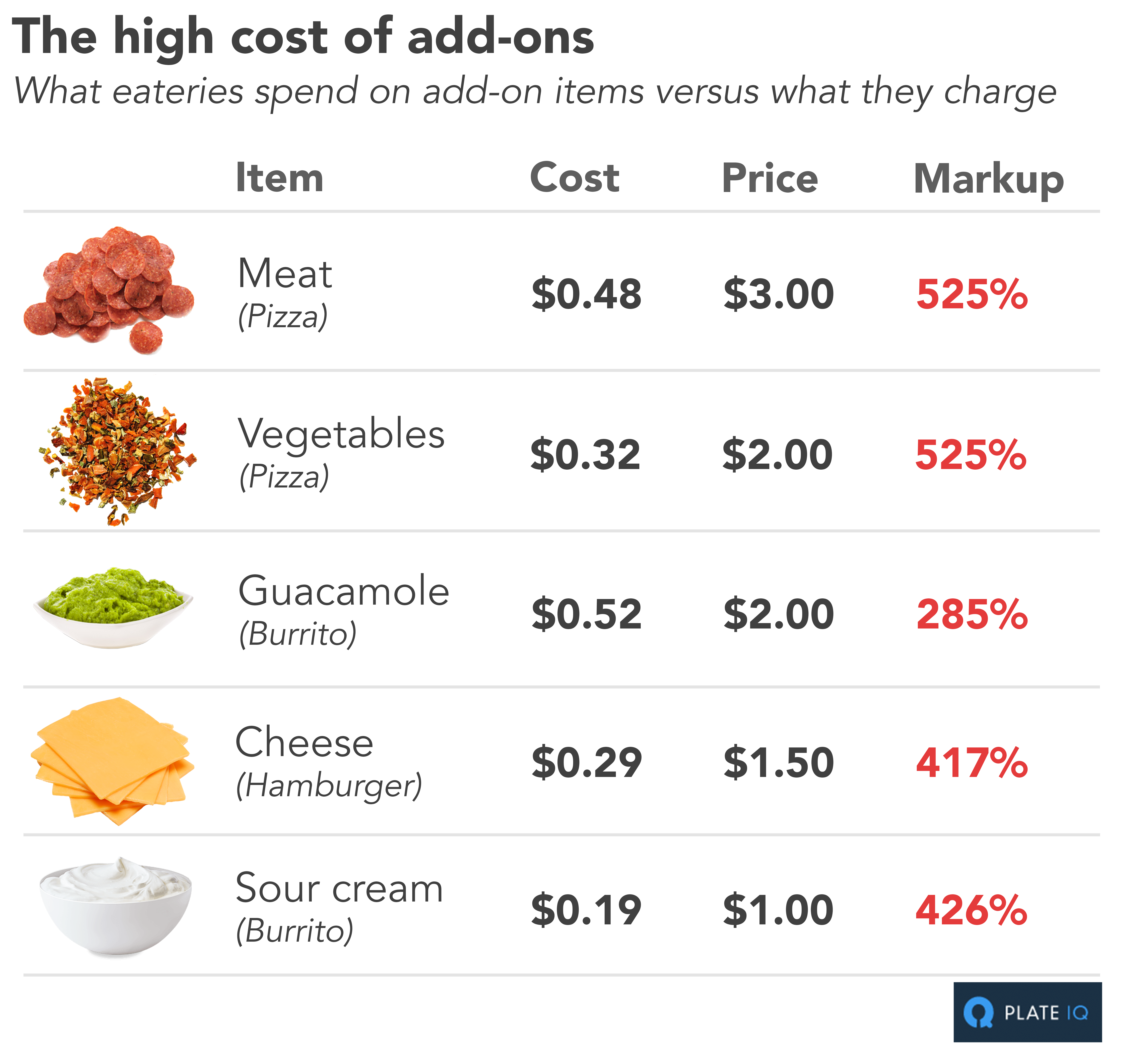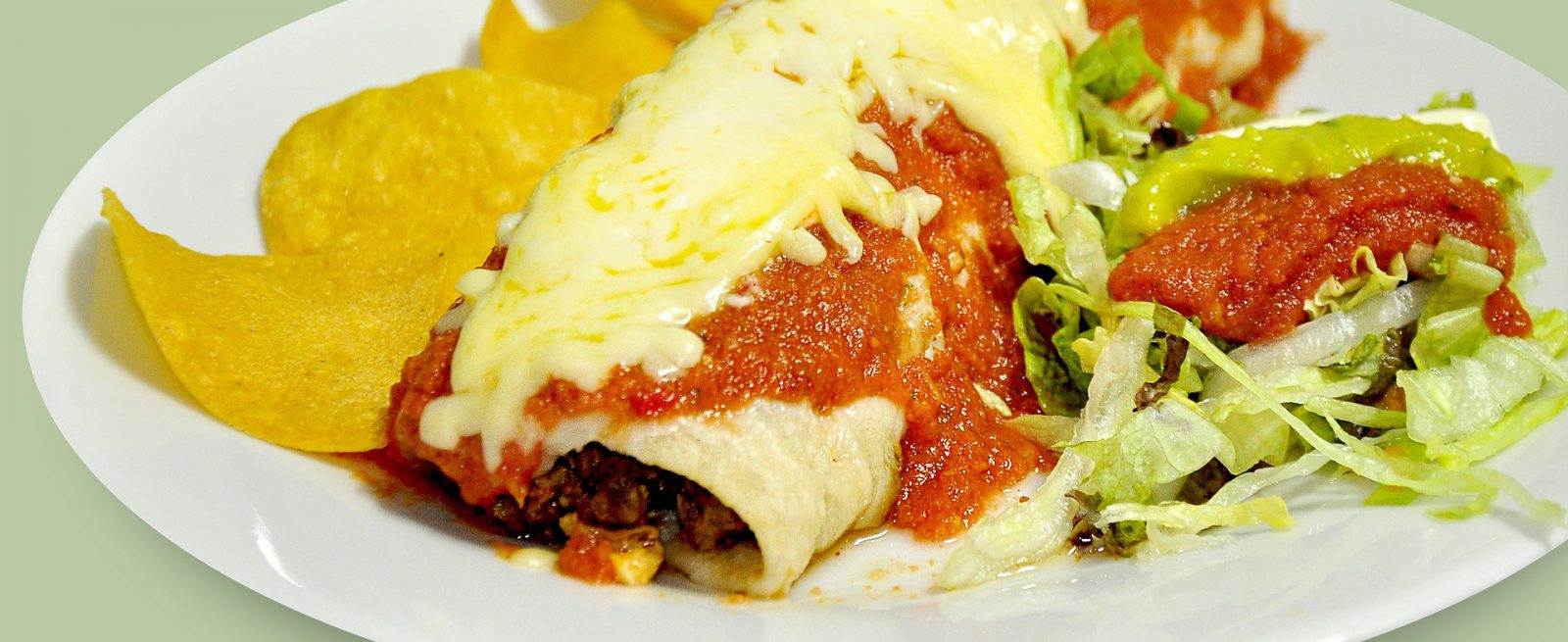Should You get the Guacamole on Your Burrito? A Price Analysis of Favorite Restaurant Foods
3 Min Read By Bhavuk Kaul
The restaurant business is notoriously tough, and owners have a myriad of costs ranging from health permits to commercial rent. On average, 30 percent of a restaurants revenues go to labor costs, 30 percent goes to general overhead, and 30–33 percent is spent on ingredients. Making a decent profit in the restaurant industry is a high hurdle. When consumers eat out they pay for a lot more than just the food; it’s the excellent waitstaff, unique ambiance, convenient location, in addition to the delicious dish that makes for a memorable experience. In order to cover all of these costs and still make a slim profit (generally three-to-five percent), restaurants need to mark up ingredients on average 300 percent.
But some items offer dramatically different margins than others.
Plate IQ processes invoices for thousands of restaurants, and has unique access to the actual costs of the raw ingredients that go into our favorite foods. We decided to use our data to look at five common food items: the hamburger, the burrito, the pizza, the omelette, and the Cobb salad. For each item, we focused exclusively on West Coast prices, and analyzed two variations.
Here’s what we found: The markup you pay for a given item ranges anywhere from 155 percent to 636 percent — and generally, the higher-end meal you purchase, the better the deal you’re getting.
First, let’s take a look at an American classic: the hamburger.
Ingredients widely vary in raw cost.
For example, the restaurant we surveyed bought its ground beef for $4.20 per pound. That means each quarter-pound patty (the standard in a burger) costs them $1.05 to produce. Onions are dramatically cheaper, at $16.87 for 50 pounds — or only slightly more than one cent per burger.
For “upscale” burgers, which generally cost around $14, the total cost of raw goods is $3.08 — a 355 percent markup. For standard burgers ($9), the markup is even higher, at 384 percent.

How does this stack up against other popular food items
Let’s turn to another item that is probably just as ubiquitous as the burger on the West Coast: the burrito.
It the case of the burrito, the markup for the “deluxe” version — loaded with additional ingredients — is only 158 percent: they cost about $4.27 to make, and you buy them for $11. The meat makes up nearly 40 percent of the cost.
For a more standard burrito ($9), the markup is a considerably higher 346 percent — roughly comparable to a burger. Aside from the meat ($0.67), cheese ($0.31), avocado ($0.28), and tortilla ($0.26), every other ingredient costs less than 20 cents. Garlic costs less less a penny per burrito.
The Cobb salad tells a similar story: the higher-end farm to table version has a much lower markup than the standard salad.

Despite being priced $6 more than the standard Cobb salad, the farm to table version has a much lower markup. This is because it contains so many high-cost items: artichokes ($1.15 per salad), organic chicken ($1.13), frisee ($1.08), and bougy touches like a quail egg ($0.66) and prosciutto speck ($0.44).
The standard Cobb salad, on the other hand, costs only $3.45 to make and has a 248 percent markup. In general, it seems salads are far less profitable for restaurants than more substantial, meatier options.
So far, we’ve seen that the markup of food items generally does hover around (or far below) the 300 percent standard. But several items we looked at FAR exceeded this.
Take, for instance, the omelette:

We looked at two variations of the omelette: a standard spinach option, and the Denver omelette, which contains ham and cheese. Both had much higher markups than the other items we’ve looked at so far.
The Denver omelette (566 percent markup) costs a measly $1.35 to make: no item in the entire dish is more than 50 cents.
But the true king of marked up dishes? The pizza.

A meat-loaded pizza like the Cowabunga Dude only costs $1.90 to make, and generally sells for $14. That’s a 636 percent markup. A plain margherita pizza, at a cost of $1.77, retails for $12 — a 580 percent markup.
A big contributor to these huge markups is the incredibly low cost of making the crusts. A pizzeria can buy a 50-pound case of flour for around $15. This works out to around 20 cents’ worth of flour per pizza. The yeast costs less than one cent per pizza.
Lastly, let’s take a look at the price of some popular add-ons. Is it worth it for you to get something like sour cream added to your burrito?

Add-ons generally tack on an additional $1 to $3 to the price you pay. For the restaurant, these add-ons typically don’t cost them very much to purchase.
Let’s say you add cheese ($1.50) to your standard hamburger. That slice of cheese probably costs the restaurant around 10 cents — but it raises what you pay from $9 to $10.50. That one small addition raises the markup from 384 percent to 436 percent.

Aside from the fact that restaurants have to cover their operational costs, there’s a reason we pay more for food than what it’s worth in its raw form: the experience.
For the first time in recorded history, Americans are spending more at restaurants ($54 billion) than they are on groceries ($52 billion). It’s fun to eat out — and most of the time, that makes paying a 400 percent markup for a burger worth it.


